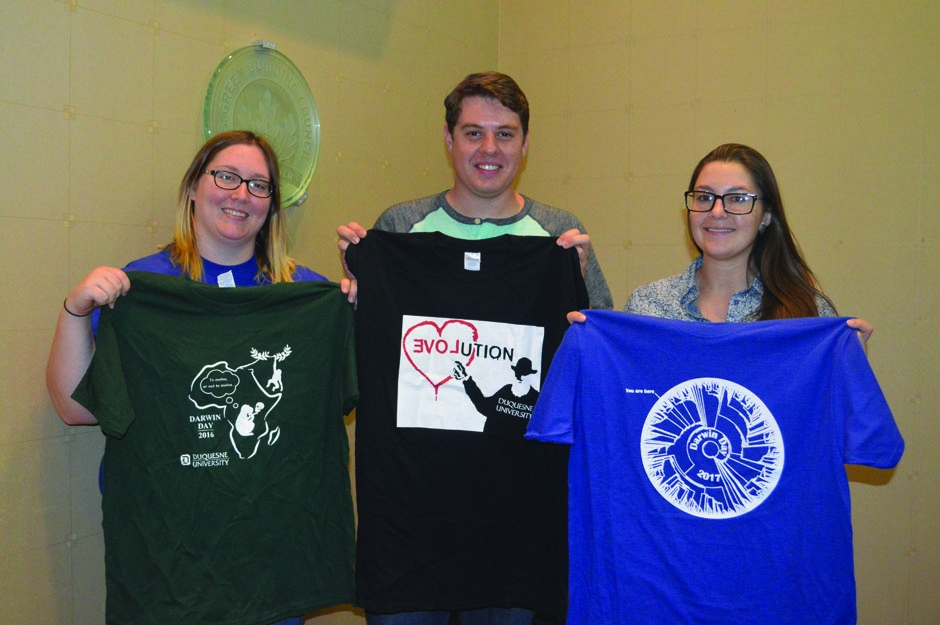

Carolyn Conte | The Duquesne Duke
Twenty Duquesne students simulated homelessness by sleeping outside on the Mellon Hall patio during the early hours of April 11 as part of a homelessness awareness event hosted by the Duquesne chapter of the St. Vincent de Paul Society.
The campout followed an evening of documentaries, presentations and role-playing. Event coordinator and President of the St. Vincent de Paul at Duquesne Joseph Ratay said the event was meant to be educational and to confront common myths about the homeless.
“The goal is that people will see it can happen to anyone, and see it in a new light, and that [the homeless] are just like them,” Ratay said, “and hopefully [that] will encourage people to get engaged with the homeless in Pittsburgh.”
Even if they were able to get comfortable on a concrete patio amid strong wind and temperatures in the mid-40s, the students did not sleep soundly.
“We woke everybody up at 2:30 and made them move to simulate a real night on the street,” Ratay said. “I found sleeping outside to be much more difficult than I had originally imagined. The wind and the ground proved to be the most difficult parts of sleeping outside.”
At the beginning of the night, one of the participants, a Spiritan seminarian named JohnPaul Gaston, expected the event to increase his empathy for the homeless.
“It’s very easy to pass by a stranger on the street, but [with this event] you can develop a personal connection and say ‘Hey, I know a little about what it’s like to sleep outside too,’” Gaston said. “Just through the night I hope it’ll create the humility that you find in homeless people.”
At one point, each attendee received an index card with a short biography of a fictional homeless person. Participants were encouraged to imagine what it would be like to live as that person.
The Rev. Bill Christy, faculty advisor for Duquesne’s St. Vincent de Paul chapter, received the biography of a homeless 77-year-old veteran with post-traumatic stress disorder. Christy said his character, like many homeless people, needed “more than just a meal.”
In another homelessness awareness event, 63 students stood in silence on A-Walk during “Stand Up” on April 15 at 5:30 p.m. This was meant to draw attention to the plight of homeless children, according to coordinator and Duquesne professor Erik Garrett.
“We can generate recognition for the homeless,” Garrett said. “Most people have an image of an old man under the bridge. This shifts that image to that it can be kids, it affects everyone and can be anyone.”
The Familylinks Downtown Outreach Center and Shelter is one local program that supports homeless youth. Lenny Prewitt, the Familylinks Downtown Outreach Program manager, said the homeless problem in Pittsburgh is compounded by drug use and the recent recession.
Andrew Mulkerin, spokesperson for Familylinks, said former foster children who are not adopted often become homeless. The Congressional Coalition on Adoption Institute reported that more than 23,000 youth aged out of the U.S. foster care system in 2012 without financial support.
Allegheny County’s annual homelessness report counted 38 “unsheltered” people living in the county, compared to last year’s 108. However, this number does not include those living in emergency shelters and transitional housing. Additionally, the number reported might have been artificially low because the count happened on a cold January night when many homeless individuals were in shelters, according to the report.
According to Prewitt, treatment and services for the homeless are improving.
“Twenty years ago we were infants in our approach,” Prewitt said. “We’re on the right track.”


